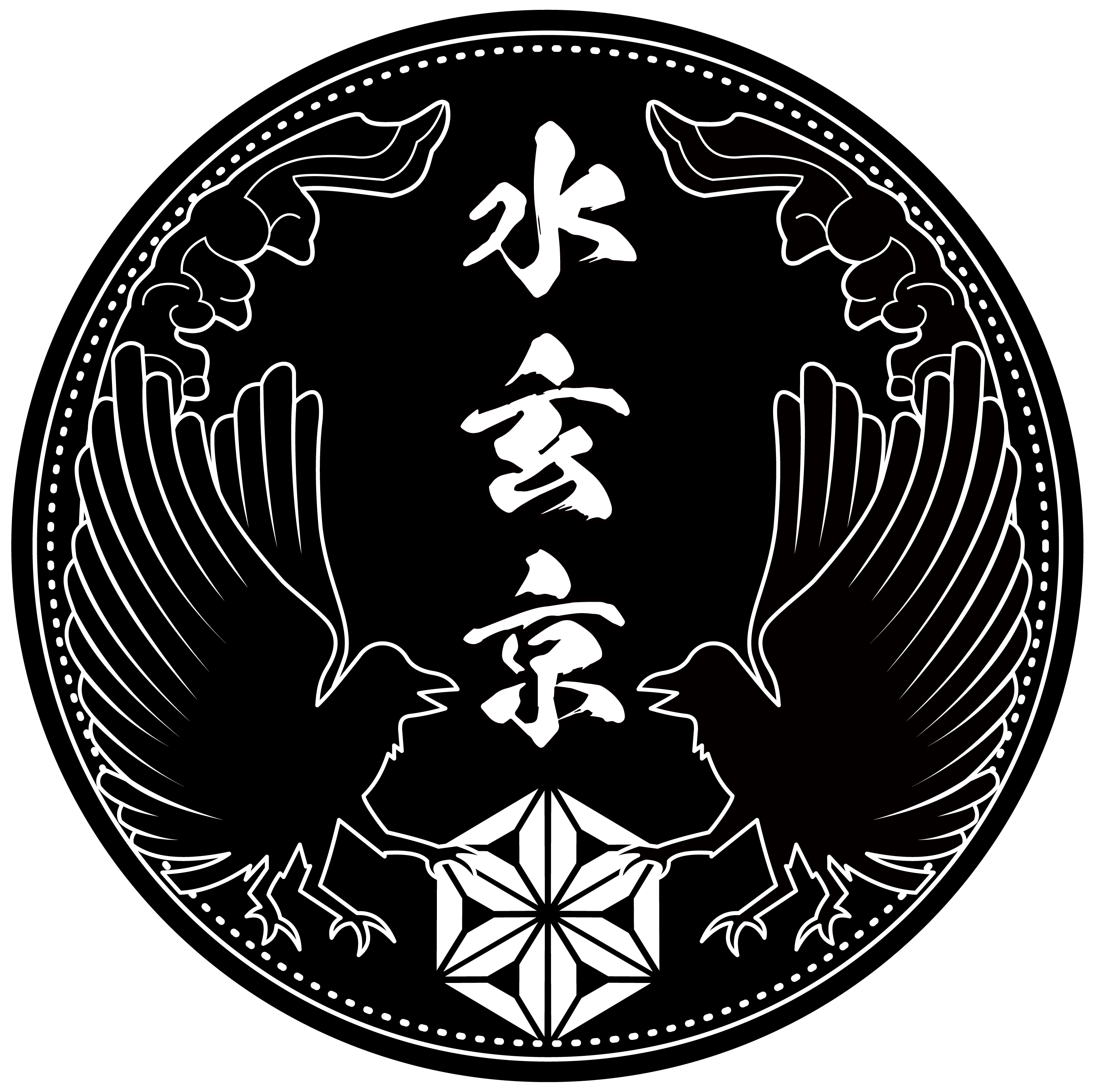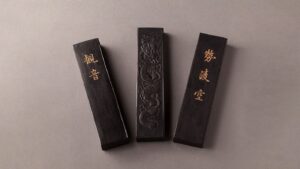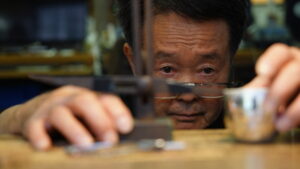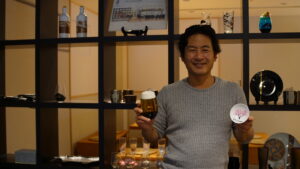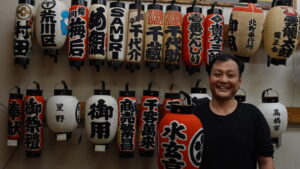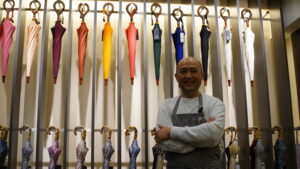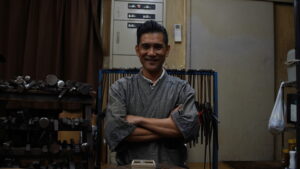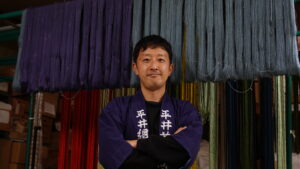Shigaraki pottery shop called Soutouen is located in Shigraraki city in Shiga prefecture. They own one of the largest kilns in Japan and produce large number of crafts in a certain season. They mainly make tableware, but also craft tea ceremony utensils, fountains, pots and even tire stopper for parking lots. In addition to their main business, they offer pottery classes and it is obvious that they provide wide range of services for their customers. For this interview, we spoke with Takashi Ueda, the representative of Soutouen.
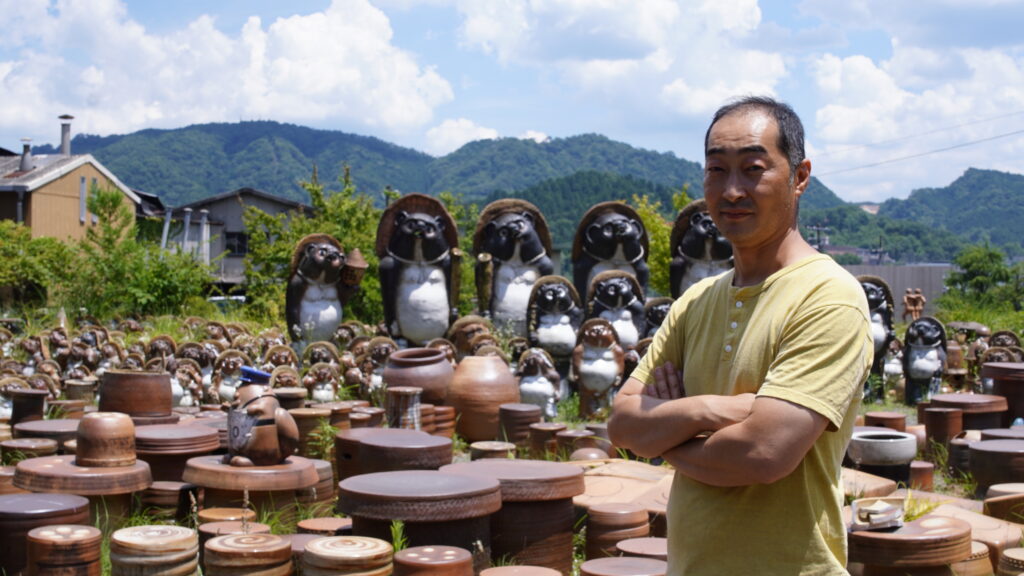
- —Can you tell us about your background?
-
I have always had opportunities to be involved in “pottery”. As I grew up in Shigaraki since I was in elementary school, I used to make anything with clay at my school. Actually, there were many kids around me whose parents are potters, and I was familiar with that industry, but I started to study hard about it after I entered my university. I got into the Department of Crafts at Osaka University of Arts and worked at some pottery schools. I was in Osaka for almost 10 years and came back to my hometown. After I got back to Shigaraki, I started to do my current job.
- —Is that a form of succession?
-
That’s right. That was the plan when I came back here, but the work I did at my university and the work here are quite different. When I was at the college, I focused on “expression”. However, since the technique of rokuro (a potter’s wheel) was something different from what I leaned at my university, I acquired the skill from my grandfather and other craftsmen. On the other hand, I am glad that I was able to learn how to express myself through art while I was a student.
- —Did you ever think about getting another job?
-
I have never thought getting another job. I had a vague feeling as a child that I would probably take over the family business. I have known that all the children of pottery makers around here would work there as heirs. But in my case, my career was like no other, so going to college and working in a pottery class was a good experience for me.
- —In your earlier discussion, you mentioned that you studied “expression” during your college years. Is it another option to be an “expressionist”?
-
After I graduated from my university, I wanted to work at Soutouen by using the “expression” rather than expressing myself. The work here is diverse. We offer pottery classes and make tanuki (raccoon dogs), tableware, and tea ceremony utensils. My grandfather mainly used to make tea ceremony utensils. I was interested in those kinds of things and also the artwork, which I studied at college. Additionally, my family is a wood-fired potter, so I thought I could make crafts that blend all my experience above.
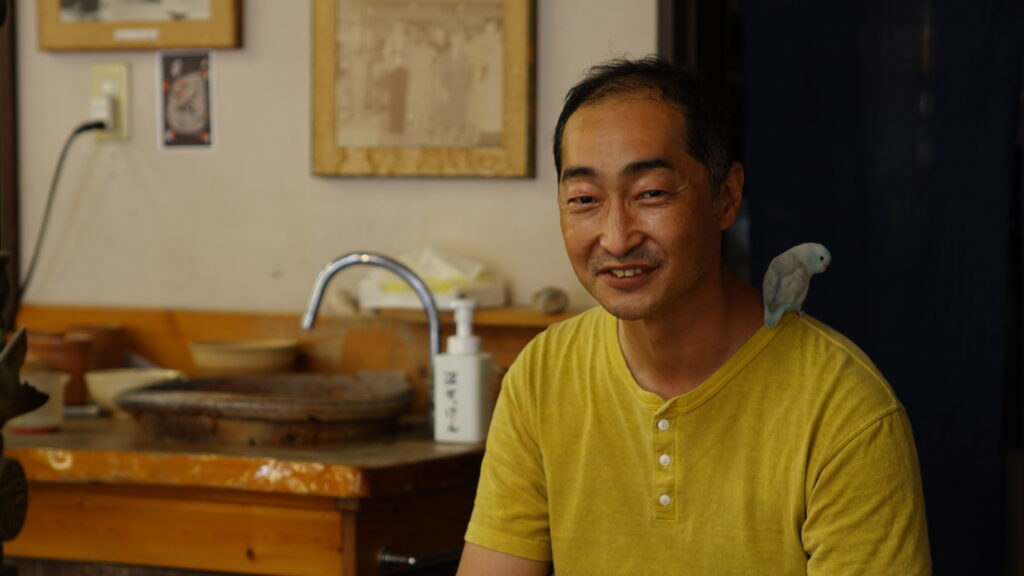
- —Compared to office workers, I think that craftsmen don’t have much time off. What do you usually do when you have your day off?
-
Basically, I tend to go out for getting some inspiration. Without inputting any inspiration, you cannot output them, so I try to go out somewhere for that. I don’t spend my days off in Shigaraki. I love to go to the main city, watch a movie, or visit an art museum. I went to Nagoya city to see an art museum for my last day off!
- —Is there anyone you respect?
-
In terms of making potteries, I respect my grandfather who passed away last year. I think he was a terrific craftsman and artist. He worked really fast, was creative, and had tremendous energy.
- —Do you have any particular technique that you are proud of as Soutouen or something that other ceramic artists cannot copy?
-
That can be the large kiln that we have. It is the last one in Shigaraki that is still in operation. In order to operate it, you have to be able to make a variety of things, and also need to have the skills to fire them. Even if you look for the similar kiln all over Japan, you cannot find the similar work anywhere else. It is true that the use of electricity and gas have been popular to make potteries so that having this traditional kiln is the pride of Soutouen.
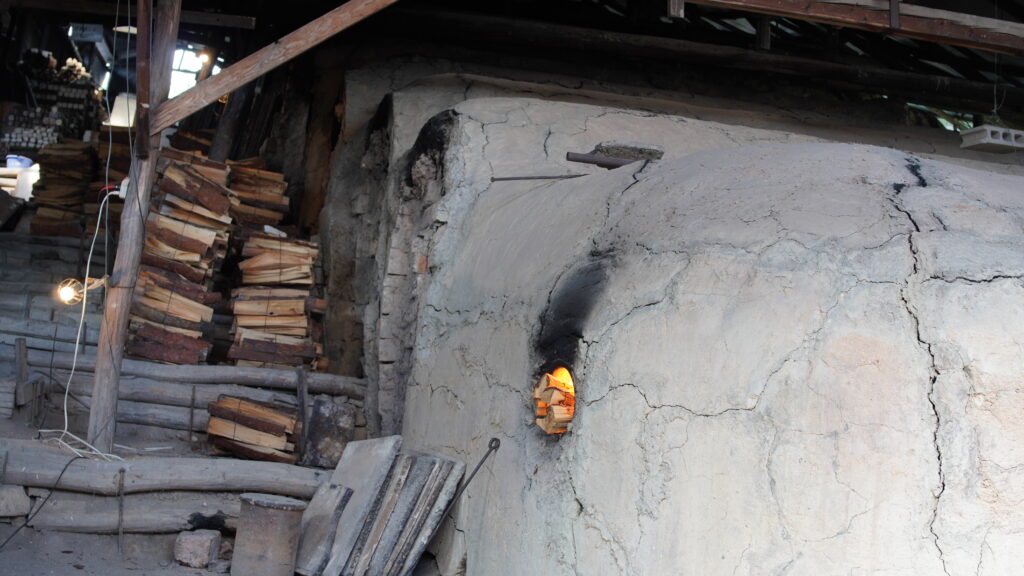
- —I would like to ask you about the future. Compared to other craftsmen, you seem to have a more diverse range of work. Do you have any ambitions for the future?
-
Compared to the past, there are much fewer craftsmen in Japan. In the past, craftsmen were an assembly-line system like each specialist focus on a single phase of crafting. However, each craftsman is given a great deal of work in recent years. This is actually a good thing because this allows us to see everything from the beginning to the end of the crafting. I want to take advantage of this opportunity and expand my business scale.
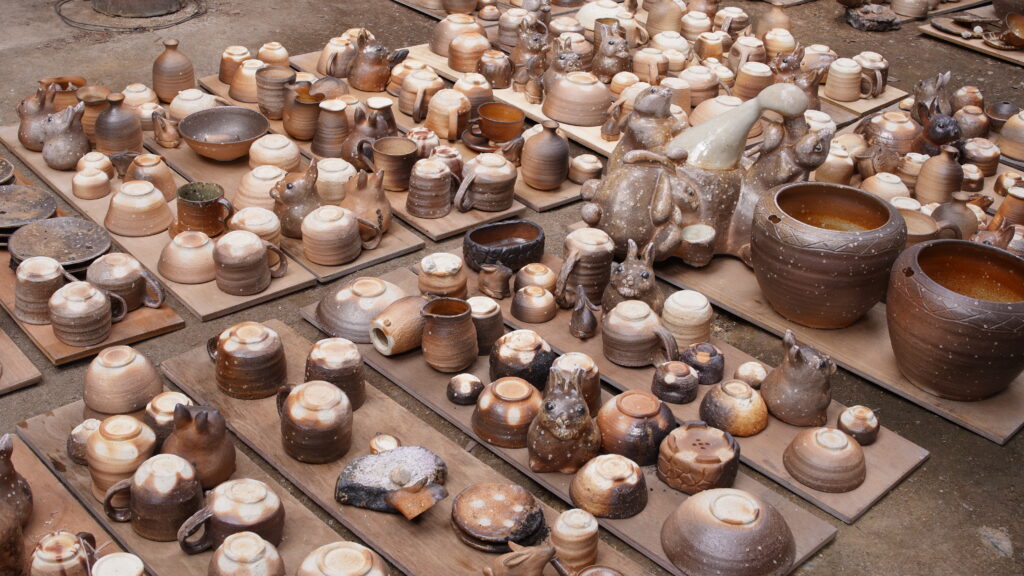
- —Finally, do you have any message for aspiring craftspeople?
-
I can’t say it’s easy, but this job is interesting, profound and creative. Nowadays it is mechanized to make things. However, especially for making potteries, you have to dig up clay from the ground, knead it, fire them in a kiln, shape it, and make it into a craft. It is a primitive way of making things, but because of those processes, you can express yourself though the making of potteries. It can be a clue to know yourself and an environment where you can grow through the pottery making.
You can watch the production process of Shigaraki ware on YouTube!

Suigenkyo Online Store
We offer a wide range of products including tableware, accessories, and interior design.
Suigenkyo YouTube
You can see the making process of the products listed on Suigenkyo Online Store.
